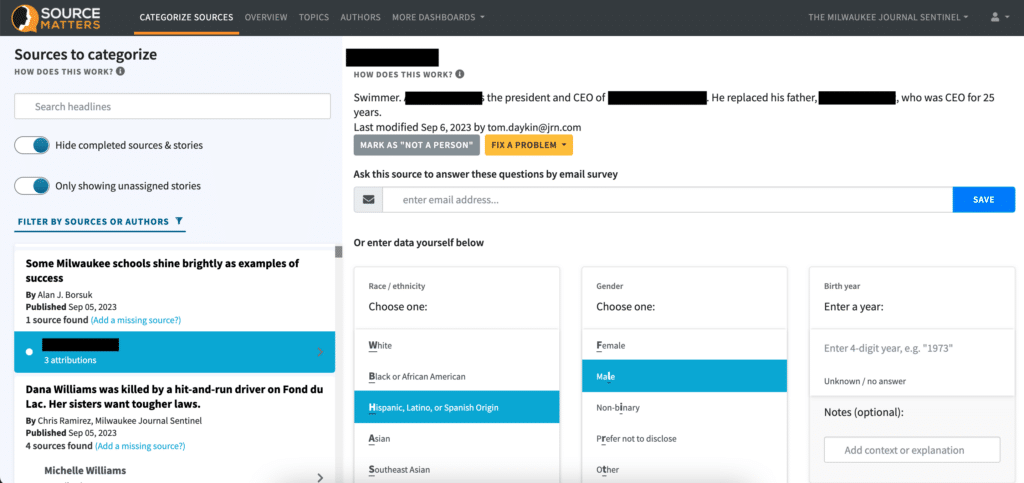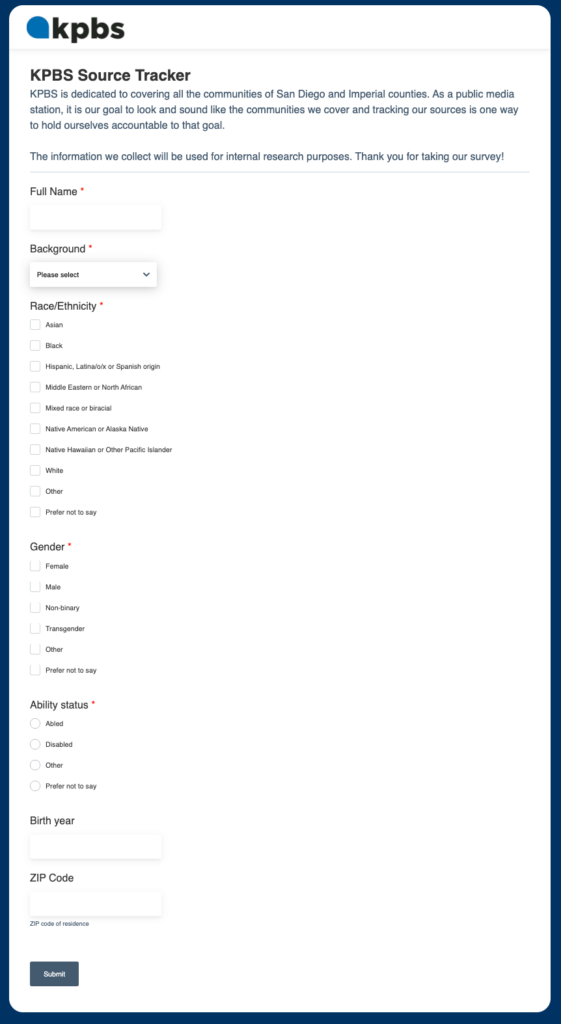To build muscle memory around any habit, you need to practice regularly. Source tracking in newsrooms is no different. Last week we talked about the importance of setting impactful goals to strengthen coverage of local communities and amplify underrepresented voices, building on broader diversity, equity and inclusion initiatives. Your newsroom can benefit from creating a sustainable DEIB plan, but it’s just as important that managers provide the infrastructure to make it possible to sustain the work.
Source tracking in newsrooms is no different. Last week we talked about the importance of setting impactful goals to strengthen coverage of local communities and amplify underrepresented voices, building on broader diversity, equity and inclusion initiatives. Your newsroom can benefit from creating a sustainable DEIB plan, but it’s just as important that managers provide the infrastructure to make it possible to sustain the work.
We can talk about the values and big goals, but the work can’t get done without a practical plan. This week will focus on workflows and rolling out an effective source-tracking initiative.
One essential step is planning the process for how reporters will collect information from sources. Will you provide a script for reporters to use at the end of interviews, or do you want to create a survey for reporters to send to all sources? This process looks different across newsrooms, so choose the way that reduces friction as much as possible to encourage wide participation.
If your organization is serious about including new voices and better amplifying underrepresented voices, it’s crucial that you find ways to root your daily workflow in inclusivity.
WHERE TO START
Explain why this matters to your organization. It is critical to plan how you will roll out this project, but don’t forget about it after the first training session ends.
Most news organizations Source Matters works with follow a similar process when launching a source tracking initiative: Decide who will lead the project, host training sessions, launch the project, hold reporters accountable for collecting and logging the source information in the source tracking system and then schedule a time to check in and reflect on the data. However, our partners at San Antonio Report and the Journal Sentinel in Milwaukee found that it’s crucial to underpin each step with clear explanations— internally and externally — for why their teams are taking on this project. Newsroom leadership should use staff training as an opportunity to spell out the process and explicitly state why source tracking is an organizational priority.
Help reporters talk about this project with sources. During training, leaders should provide guidance on how reporters can ask sources for the information they need to collect without breaking from their regular interviewing techniques. Reporters can follow a script customized to what the newsroom decides to track at the end of an interview and tag the sources in a spreadsheet or a tool, like the Source Matters database. The script adds structure to the process —explaining to sources why you are gathering data and your organizational goals behind it. It can prompt a conversation between the reporter and source and can help the reporter ease into questions.The sample script API offers also provides an out for the source: they do not have to answer these questions if they feel uncomfortable.
Keep talking about source tracking after kickoff. Blanca Méndez, San Antonio Report’s community engagement editor, set up an initial two-week tracking period as a test to work out any process problems, answer questions or troubleshoot the Source Matters tool.
“I think that was a little more like low pressure during that first tracking period. And then the second tracking period, we had figured out what we were wanting to do with the tool and how we were asking people the questions,” Méndez said. During the initial phase, Méndez and her team used a Slack channel for team members to post any questions or issues and checked in during their weekly editorial meeting. After the first collection period, Méndez shared some of the initial insights with the team to encourage people to examine their individual data for themselves. Now the team in San Antonio collects and logs source data on a continuous basis.
Similarly, the Journal Sentinel team now does continuous tracking versus discrete periods. “It’s been a bit of a challenge, but I’m glad we’re doing it this way because it’s more of a continued push,” said Rachel Piper, deputy editor for news, projects and investigations. Piper said the team meets regularly to categorize sources and look at the data they have. “The feedback has been good so far. I think once people try it, they see how easy it is.”
Both teams are taking approaches that will help develop muscle memory around new sourcing habits, hopefully ingraining it into daily workflow, and ultimately the culture of the organization.
Adapt to workflows that work for your newsroom. KPBS, one of API’s Source Matters cohort newsrooms, has developed a system for reporters and producers to be able to collect demographic information by allowing the source to fill out a survey on their own. The reporter is responsible for making the “pitch” to the source, urging them to complete the survey in person via QR code, or by sharing a link to the form. Ultimately an office assistant inputs the survey data into the Source Matters database. This creates a streamlined process for their reporters to ask for their sources’ information.
No matter how newsrooms choose to collect the information, the key piece is that reporters and editors get in the habit of thinking about sourcing while planning the story, as well as asking sources to answer a set of questions that will later get added to the source tracking system.
TRY IT OUT NOW
Here are additional tips I’ve learned from our partner newsrooms who have launched source tracking initiatives:
- Mention source tracking frequently in staff meetings for everyone to be mindful of it.
Frame the organization’s performance in terms of whose voices are getting quoted this week or month. - Provide consistent messaging from the top down to help reporters understand the organization’s commitment to source diversification and representation. Regularly talk about source tracking during staff meetings as well as write about the efforts publicly.
- Give reporters access to the source data in order to make their own interpretations about their data and decide how to use it.
- Allocate time for reporters to sit down (with free snacks!), do the source tagging together and talk through new ways of sourcing.
- Provide ways to simplify the process where possible. Download this sample script and adapt it for collecting source information.
DIG DEEPER
- Source Matters is accepting new partners. Register for a demo on Thursday, Sept. 14, at noon EDT, or contact us to learn more about source diversity tracking.
- If you want to start tracking sources but don’t quite know where to begin, here’s a guide to help you get started.
Share with your network
- Diversify Your Sources
- Building source tracking into newsroom workflows
- How community engagement can inform source tracking
- How to get staff buy-in for tracking sources




